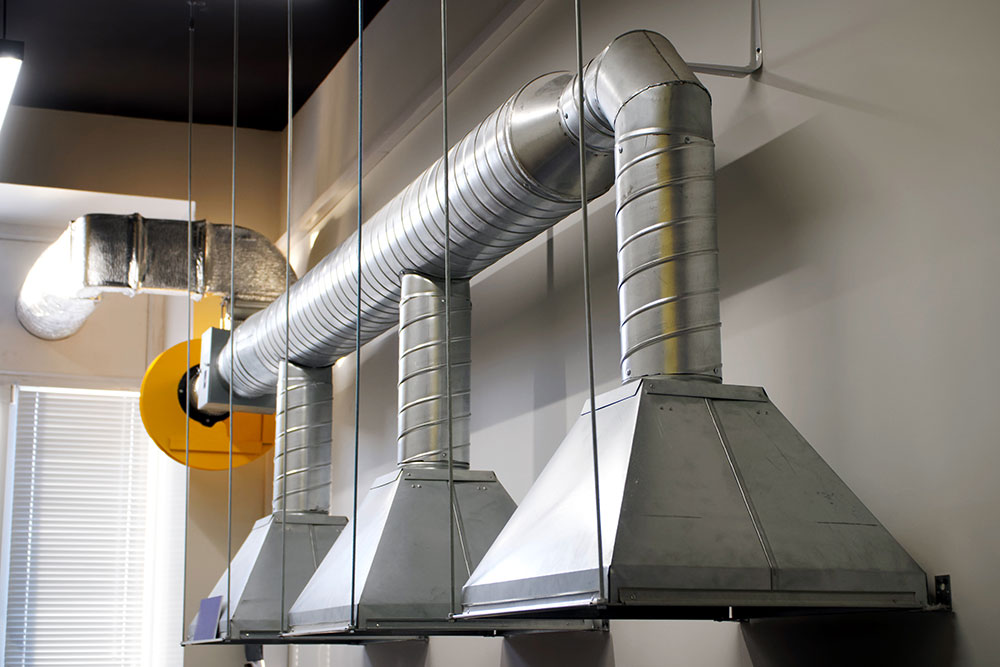In the realm of ventilation systems, extractor fans and exhaust fans play vital roles in maintaining indoor air quality and ensuring a comfortable living or working environment. While these terms are often used interchangeably, it is important to understand the subtle yet significant differences between them. In this article, we will delve into the distinctions between extractor fans and exhaust fans, exploring their functionalities, applications, and benefits. By the end, you will be equipped with the knowledge to make an informed decision when selecting the appropriate ventilation solution for your specific needs.
- Definition and Purpose:
Extractor Fans:
Extractor fans, also known as extraction fans or ventilation fans, are designed to remove stale air, odors, and pollutants from enclosed spaces. They are primarily installed in kitchens, bathrooms, and other areas prone to moisture, steam, or strong odors. Extractor fans work by extracting the air from the room and expelling it outside, creating a negative pressure that facilitates the inflow of fresh air.
Exhaust Fans:
Exhaust fans, on the other hand, are designed to expel air from a confined space, typically used in industrial or commercial settings. They are commonly found in factories, warehouses, and garages, where the accumulation of heat, fumes, or hazardous substances necessitates their removal. Exhaust fans operate by pushing the air out of the building, creating positive pressure and promoting air circulation.
- Installation and Configuration:
Extractor Fans:
Extractor fans are typically mounted on walls, ceilings, or windows, depending on the specific requirements of the space. They can be ducted or non-ducted, with ducted systems being more efficient in directing the extracted air outside. Ducted extractor fans are connected to a ventilation duct, allowing for better control over the airflow and noise reduction.
Exhaust Fans:
Exhaust fans are commonly installed on walls or roofs, enabling the direct expulsion of air from the building. They are often connected to ductwork systems that channel the air to the exterior. In industrial settings, exhaust fans may be equipped with additional features such as louvers or dampers to regulate airflow and prevent the entry of outside elements.
- Performance and Efficiency:
Extractor Fans:
Extractor fans are designed to provide localized ventilation, effectively removing moisture, steam, and odors from specific areas. They are generally more energy-efficient compared to exhaust fans, as they focus on extracting air from targeted spaces rather than ventilating the entire building. Extractor fans also offer adjustable speed settings, allowing users to control the airflow according to their needs.
Exhaust Fans:
Exhaust fans are engineered to provide general ventilation, ensuring the removal of pollutants and maintaining a healthy indoor environment throughout the entire building. They are typically more powerful and capable of handling larger air volumes than extractor fans. However, this increased performance often comes at the cost of higher energy consumption.
- Noise and Aesthetics:
Extractor Fans:
Extractor fans are designed to operate quietly, minimizing noise disturbance in residential or commercial spaces. They are equipped with noise-reducing features such as insulated casings and low-noise motors. Additionally, extractor fans come in various designs and finishes, allowing for seamless integration with the existing decor.
Exhaust Fans:
Exhaust fans, especially those used in industrial settings, tend to produce higher noise levels due to their powerful motors and larger airflows. However, advancements in technology have led to the development of quieter exhaust fans with improved noise reduction capabilities. In terms of aesthetics, exhaust fans are often more utilitarian in appearance, prioritizing functionality over design.
Conclusion:
In summary, while both extractor fans and exhaust fans serve the purpose of ventilation, they differ in terms of their specific applications, installation methods, performance, and aesthetics. Extractor fans are ideal for localized extraction of air in areas such as kitchens and bathrooms, offering energy efficiency and noise reduction. On the other hand, exhaust fans are better suited for general ventilation in industrial or commercial settings, providing higher airflow capacities. By understanding these differences, you can make an informed decision when selecting the most suitable ventilation solution for your unique requirements.
